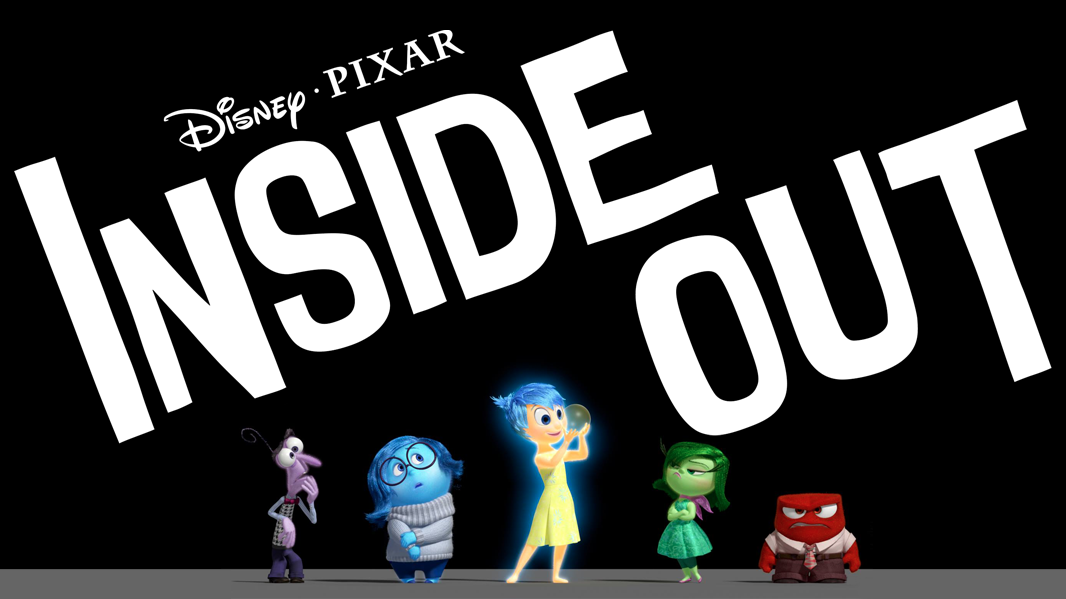By Ross Lelieur
Senior Staff Writer
Pixar has made a good number of the world’s most popular animated films, including the whimsical Toy Story and the touching Up. It was therefore surprising to many when Brave and Cars 2 were released, as they represented a dramatic drop in quality for Pixar and were unusually poorly received. Yet, even as some claimed that Pixar had thus reached and passed its glory days, the company was laboring away on a new project. This offering, Inside Out, puts to rest doubts about the status of Pixar’s movie-making ability. The animated adventure shows off Pixar’s ability to craft clever animated stories which serve to entertain children as well as their parents, something which has always set apart the company from other mainstream film industries.
Inside Out, as its promotional tagline would suggest, details the hidden world of “the voices inside of our heads.” More specifically, the film follows the story of five primary emotions: Joy (Amy Poehler), Sadness (Phyllis Smith), Fear (Bill Hader), Anger (Lewis Black), and Disgust (Mindy Kaling), as they negotiate the troubles of a midwestern, 12 year-old girl on the cusp of young-adulthood, who suffers much emotional misfortune when her parents transplant the family into urban San Francisco. The girl, Riley (Kaitlyn Dias), technically is the main character, however much of Inside Out takes place inside of her brain’s “headquarters,” and centers on Joy. During this episode, Joy and Sadness are both taken on a journey through Riley’s mental functions, while the remaining three emotions attempt to control Riley on their own.
In typical Pixar fashion, the plot and characters are well crafted, and amusing to audiences of all ages. Many jokes will go over the young children’s heads, but the story is nevertheless simplistic enough to accommodate them. For parents, the movie is entertaining despite this simplicity, with items like the amusingly mysterious “puberty button” making appearances.
Beyond its humorous aspects, Inside Out also deals with more serious parts of growing up that only older audiences will appreciate. Especially important is the way in which the film deals with sadness and frustration – it is realistic, honest, and adventurous, particularly for an animated film. Inside Out moves beyond the oversimplified versions of emotion that many animated films, even those made by Pixar, too often use. And though sadness is often portrayed in a decidedly negative light in other films, Inside Out even makes the statement that in many situations it is perfectly acceptable, or even a good thing, to feel a little down. Not only is this a refreshing message for older viewers, but the point is also important to the children, still very impressionable, who constitute Pixar’s target audience.
Perhaps the only complaint to be had is a somewhat awkward pacing of the plot, which seemed to advance far too quickly, ignoring some basic questions regarding the role of the emotions and other plot structures. Yet, these were never too much of a hindrance to enjoying the film, and in the end are excusable, considering the challenge that Pixar faced in explaining the functions of the brain in a children’s film.
The reinvigoration of interest in dinosaurs with Jurassic World may have resulted in Pixar’s defeat in opening weekend ticket sales for the first time in the studio’s history, but watching both leads to the conclusion that this is not only unfortunate for the record, but also for moviegoers. While dinosaurs may be louder and more explosive, you’ll still get more bang for your buck watching Riley’s emotions run wild in Pixar’s production.
Inside Out is an excellent film crafted in Pixar’s signature cute-yet-clever style. Appealing to audiences of all ages, it delights with superb storytelling, fantastic comedy, and an important message – that “it’s difficult to grow up…and it’s okay to be sad about it” – as said by Mindy Kaling (who voiced Disgust).


